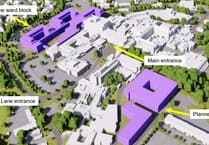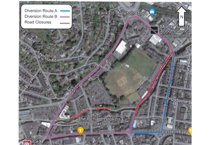One in eight Teignbridge households were in fuel poverty in 2022, new figures show.
An energy charity has warned the Government must do more to stop fuel poverty remaining a "fact of life".
Energy prices skyrocketed from the end of 2021 due to reduced supply and geopolitical issues, such as the Russian invasion of Ukraine, putting more pressure on hard-up households.
Latest estimates from the Department for Levelling Up, Housing and Communities suggest 8,256 households in Teignbridge were living in fuel poverty in 2022 - 13.2% of the 62,558 households in the area.
This puts Teignbridge above the England average of 13.1%.
Nationally, 3.2 million households were estimated to be in fuel poverty in 2022, a similar figure to the year before.
In addition, there were 574 neighbourhoods where at least a third of households were suffering fuel poverty, including 32 where this was true of half of households in the neighbourhood. None of these were in Teignbridge.
Households are judged to be in fuel poverty if they are below the poverty line and living in a house with an energy efficiency rating of D or worse.
Adam Scorer, chief executive of the National Energy Action fuel poverty charity said: "This data shows how fuel poverty hits different parts of England harder – areas with the lowest incomes and draughtiest homes."
He cautioned the Government should not consider the energy crisis over.
Mr Scorer continued: "Bills remain far higher than pre-crisis levels. Households remain dangerously exposed to volatile wholesale energy prices because of how draughty our homes are and how weak household finances have become. Energy debt has reached record levels."
The charity is calling for a social tariff for those on the lowest incomes, alongside help for those in debt and greater investment in improving the energy efficiency of homes.
The West Midlands was the worst-hit region, with 19.6% of households in fuel poverty. It had seven of the top 10 local authority areas, with Stoke topping the league table at 24.7%.
It was followed by Yorkshire and the Humber, with 17% of households in fuel poverty.
Meanwhile, the South East (9.7%), East of England (10%) and London (10.4%) had the lowest levels, while the South West's fuel poverty rate was at 12.9%.
A spokesperson for the Department for Energy Security and Net Zero said: "Today’s figures show our energy bill support schemes and progress in making homes more energy efficient have protected hundreds of thousands of households from fuel poverty.
"Almost half of all homes in England now at an EPC rating of C or above, up from 14% in 2010.
"We do recognise the cost-of-living challenges families are facing, which is why we’re spending £108 billion supporting households with their bills, including targeted support for those who need it through the £150 Warm Home Discount."




